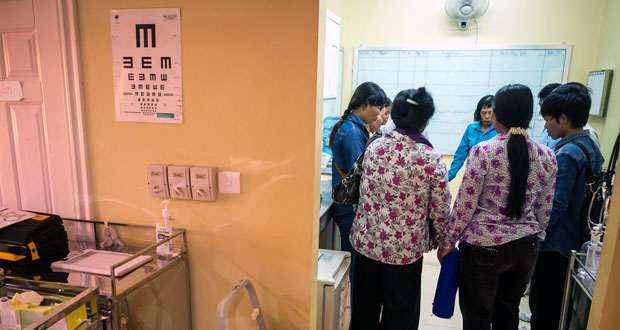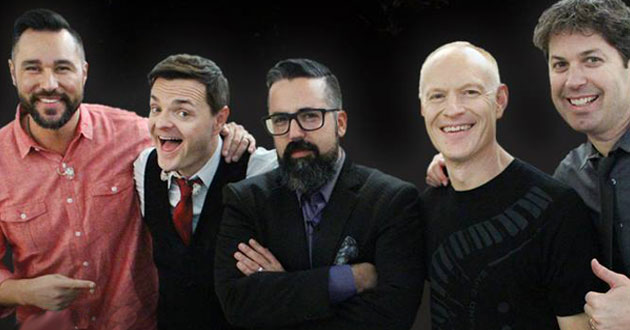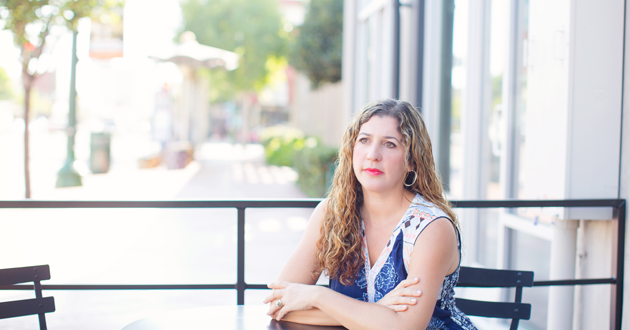‘Jesus clinic’ in Southeast Asia offers healing for body and soul

A choir of roosters welcomes the rising sun as patients roll up their mosquito nets and blankets to get ready for their follow-up appointments. Slowly, new patients trickle in, and doctors, nurses and other staff finish their breakfasts of noodle soup or saucy meat and rice.
Patients come to the clinic from all over their Southeast Asian country. The poorest of the poor, most of them can’t afford to go to the nationally run hospitals. But within minutes, patients can see that this clinic is different. While the physicians and staff work to provide a polite, respectful atmosphere, what really makes the clinic stand out is its mission to share the Gospel of Christ with each patient that comes through the doors. It’s a trait that leads the locals to call it the “Jesus clinic.”
“If you look at the New Testament, Jesus’ ministry was about preaching and healing,” missionary and clinic board member William Bailey, said. “Medicine is a way to demonstrate compassion and meet real needs [while being] a platform for evangelism and church planting.”
The Jesus clinic, a multi-national, multi-organizational medical center comprised of Southeast Asian believers and missionaries from organizations around the world, is not just concerned with providing medical care.
“We see 100-200 people per year come to Christ,” Bailey said. “By giving compassionate care to the poor, they open up to the Gospel.”
To date, the clinic is involved in 13 church plants, either leading or assisting and training villagers. One employee estimated that about four people make a decision to follow Jesus each week.
“Great medical care is a great witness,” Margaret Bricker,* International Mission Board missionary and public health specialist, said. “People come to us without hope and we use healthcare to share the hope of Jesus.”
Margaret and her husband Joseph, missionary and medical doctor, serve on the clinic staff together. Many times they are able to consult with each other in treating patients.
Saturated with the Gospel
Throughout the day, a team of believers who work on the clinic’s spiritual impact team has the unique role of sharing the Gospel with patients as they wait to see a doctor. They begin the day offering health advice — good hygiene, proper diet and exercise. But each health lesson leads to an aspect of the Gospel, giving the team the opportunity to talk to patients about Jesus.
Local believers share their testimonies and show Christian films to patients. The testimony of local believers seems to have a greater impact. “The ultimate church planter is their own people,” Joseph said. “They come from the same context and their opinions hold more weight.”
In other areas of the hospital, spiritual impact team members, receptionists and nurses sit and talk to patients one-on-one as they wait.
“My favorite thing to do is one-on-one talking with patients,” Mako Mao,* a member of the spiritual impact team, said. “I can answer questions easier.”
“I enjoy helping patients by bringing them wheelchairs,” Theary On,* a dental assistant, said. “The patients feel close to me, and I ask ‘Have you ever heard about Jesus?'”
Talk about Jesus doesn’t stop in the waiting room and in the halls. At every step during a patient’s appointment, someone is talking about or showing the love of Christ.
From early morning to late afternoon, doctors bustle about the six outpatient department exam rooms and three urgent care units, giving their utmost attention to each patient.
“When patients come to see me, I greet them and talk with them about their medical conditions and their lives,” Joseph said. “After I treat them and take time to answer all of their questions, I share the Gospel with them and pray for them.”
As Margaret Bricker enters an exam room, she smiles brightly to a returning patient. She gives the petite elderly lady a gentle pat on the arm. Because Margaret speaks a minority language, she instantly connects with many of the patients who come once a week.
“In medical care, you can have intimate conversations with people in a short amount of time,” she said. “Medical care provides … opportunity. You don’t get that when you’re just walking down the street.”
Doctors from other organizations and Southeast Asian employees likewise provide caring consultations and medical treatment in the name of Jesus, often visiting with the families and sharing the Gospel. The common core that pulls all these mission groups together is simple — sharing Jesus and planting churches.
Reaching far but staying in one place
It may be hard for some to believe that one medical clinic could sustain both a steady inflow of patients and an active church-planting ministry. That’s why the Jesus clinic is not doing all of the work but collaborating with referring partners from throughout the country.
“About 90 percent of our patients come from referring partners,” Bailey, missionary and clinic board member, said. “They reach into provinces where other organizations don’t.”
Referring partners can be local mission organizations, national churches or individuals who commit to help the patient they refer with the cost of their medical care. More importantly, these partners follow up with the patients spiritually. This oftentimes leads to church plants in places where the Gospel was once unwelcome.
In the hands of local believers
Missionaries working at the Jesus clinic have seen the value of national partners having ownership of the ministry. The clinic is full of national doctors, nurses, receptionists and technicians.
While the missionaries mentor and train the national partners — filling in gaps their education left — each department is run by a Southeast Asian, giving them decision-making abilities and ownership.
“Local believers have very much to add to the work,” Joseph said. “Their opinions are highly valued.”
Margaret said, “Our goal is to see the [Southeast Asian] believers sharing the Gospel and planting churches — us walking alongside them. They are passionate about healthcare and about the Gospel.”
— by Harper McKay | BP




